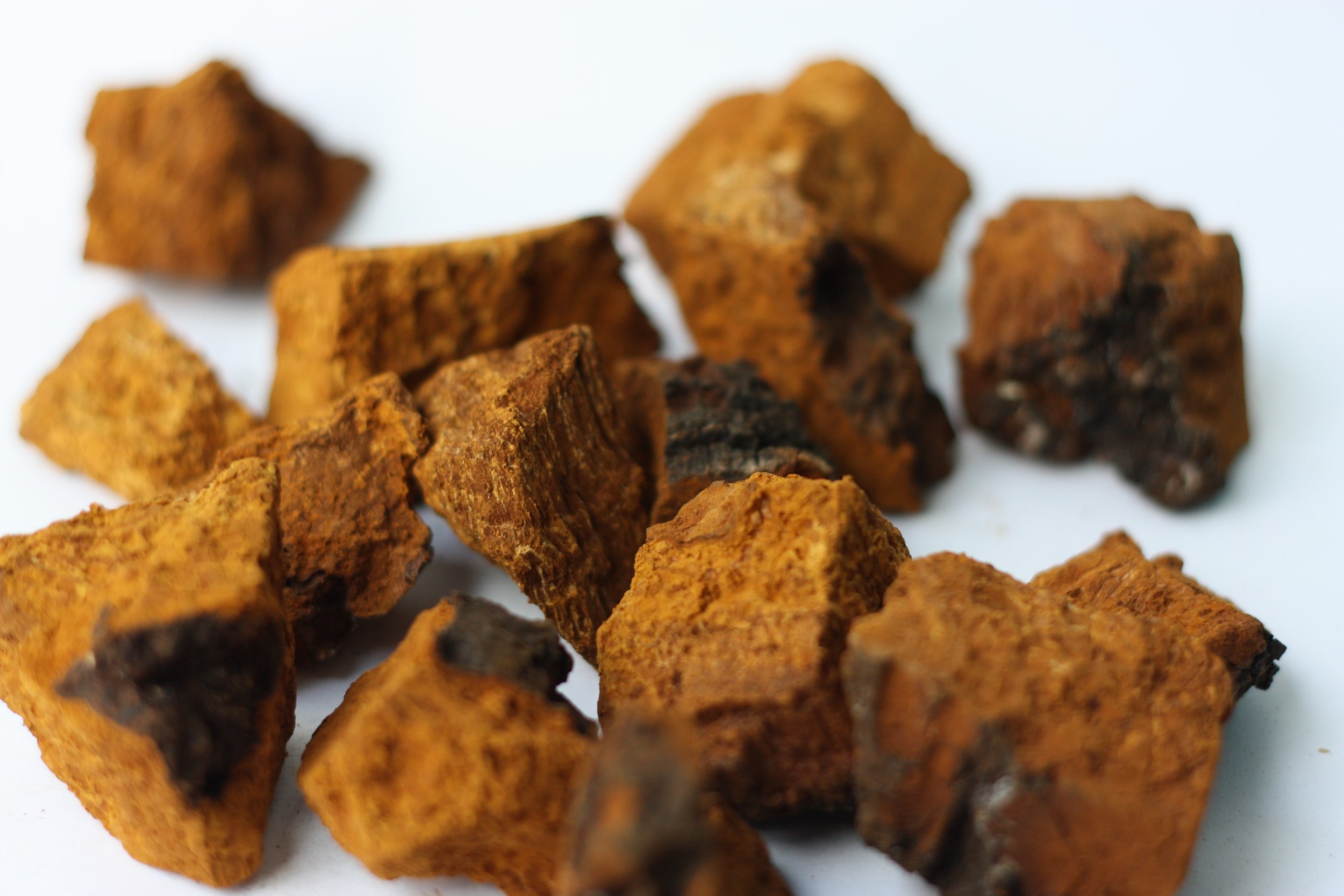By Amber Testa, CN Supplements Buyer & Armchair Mycologist
If, on a walk through the autumnal New England woods, you encountered the humble chaga mushroom, you would be forgiven for overlooking it. Indeed, though it doesn't look particularly appealing, the chaga is one of the most revered members of Kingdom Fungi, with a long history of medicinal use.
In the wild, chaga (inonotus obliquus) usually presents itself as a burned-looking mass of tissue protruding from the trunks of trees. This has given rise to such common names as 'cinder conk' and 'black mass'. The word 'chaga' itself comes from a direct transliteration of 'чага', the word for the fungus among the Indigenous people of Russia's Kama River Basin. Chaga prefers to parasitize birch trees, although it will also use beech and poplar as hosts. It grows in the colder regions of the world--primarily Russia and Northern Europe, although it has been found in Alaska and other northern US states.
Chemically chaga is known for containing high levels of melanin, which lend it its trademark dark color, as well as antioxidants (phytochemicals that protect against cellular damage). This is not one of those fungi that is prized for its taste--indeed, due to high levels of oxalates, it is especially bitter in flavor. During World War II, it was not unheard of for people in Finland to brew chaga into a coffee substitute. Nowadays, it is typically consumed by boiling ground or crumbled chaga in hot water, which extracts the beneficial phytochemicals, or by taking the extract in capsule form. It is used primarily for its purported anti-tumor activity, which initial studies suggest may be due to its antioxidant content. It also contains phytochemicals that may reduce cholesterol and lower blood sugar.
Chaga is a particularly difficult fungus to cultivate, as attempts to inoculate trees with it generally result in a mushroom with significantly different chemical profiles (and lower levels of those compounds found to be most beneficial). Thus most chaga available for commercial use is wild-harvested. In recent years, the ethics surrounding its harvest have been a source of constant debate among both the mycological and foraging communities. Due to its high value, chaga is regularly subject to overharvesting, so it's important to make sure that any chaga you consume has been sustainably harvested--and always identify any foraged fungi with 100% accuracy before you consume it!
Chaga should be used with caution by those with diabetes, anyone prone to kidney stones (which can be exacerbated by the oxalates in it), and individuals with osteoporosis (as oxalates can prevent the absorption of calcium in the body). As always, check with your medical practicioner before adding any supplements to your diet.
While Chaga remains one of the more under-researched members of the medicinal mushroom community, early studies have suggested it possesses a host of beneficial health properties. At Cambridge Naturals, you can find it in such forms as convenient capsules, flavorful chai, and (my personal favorite) cookies! If you're feeling adventurous, we also have crumbled chaga in bulk -- perfect for creating your own extracts or recipes. With so many different ways to consume it, Chaga is worth a look for sure.
Sources:
https://naturopathic.org/news/565437/5-Reasons-to-Consider-Chaga-Mushrooms.htm
https://health.clevelandclinic.org/chaga-mushroom-benefits/
The information in this blog post is not intended or implied to be a substitute for professional medical advice, diagnosis or treatment. Always seek the guidance of your doctor or other qualified health professional with any questions you may have regarding your health or a medical condition.



